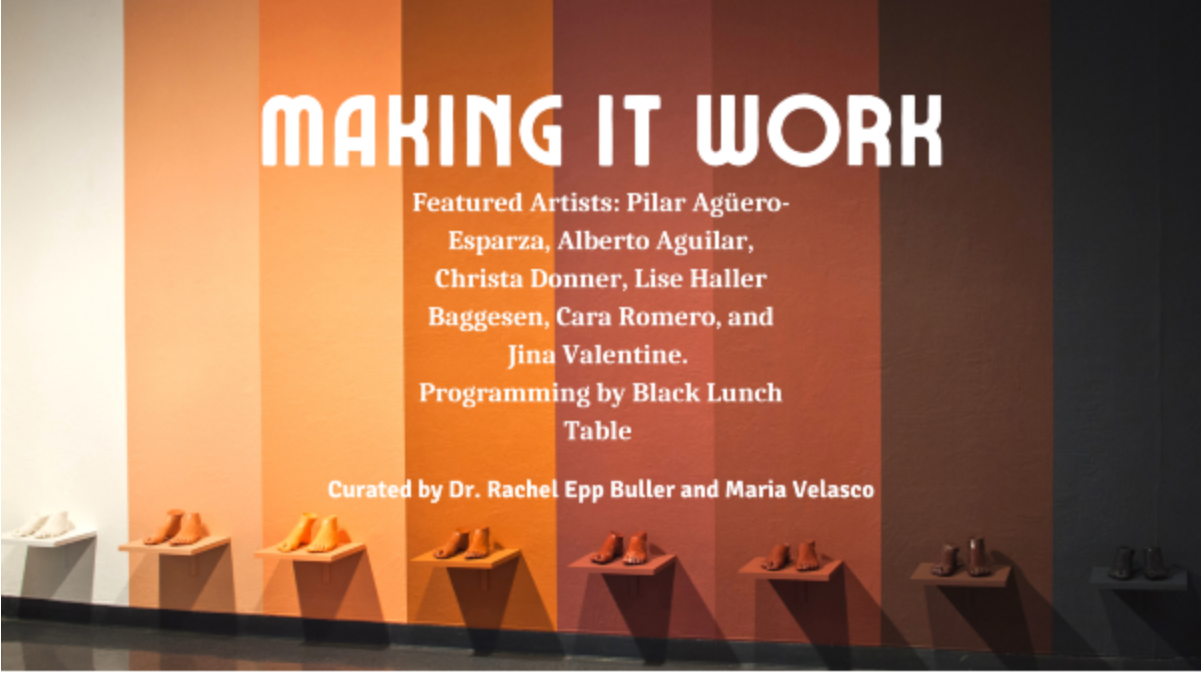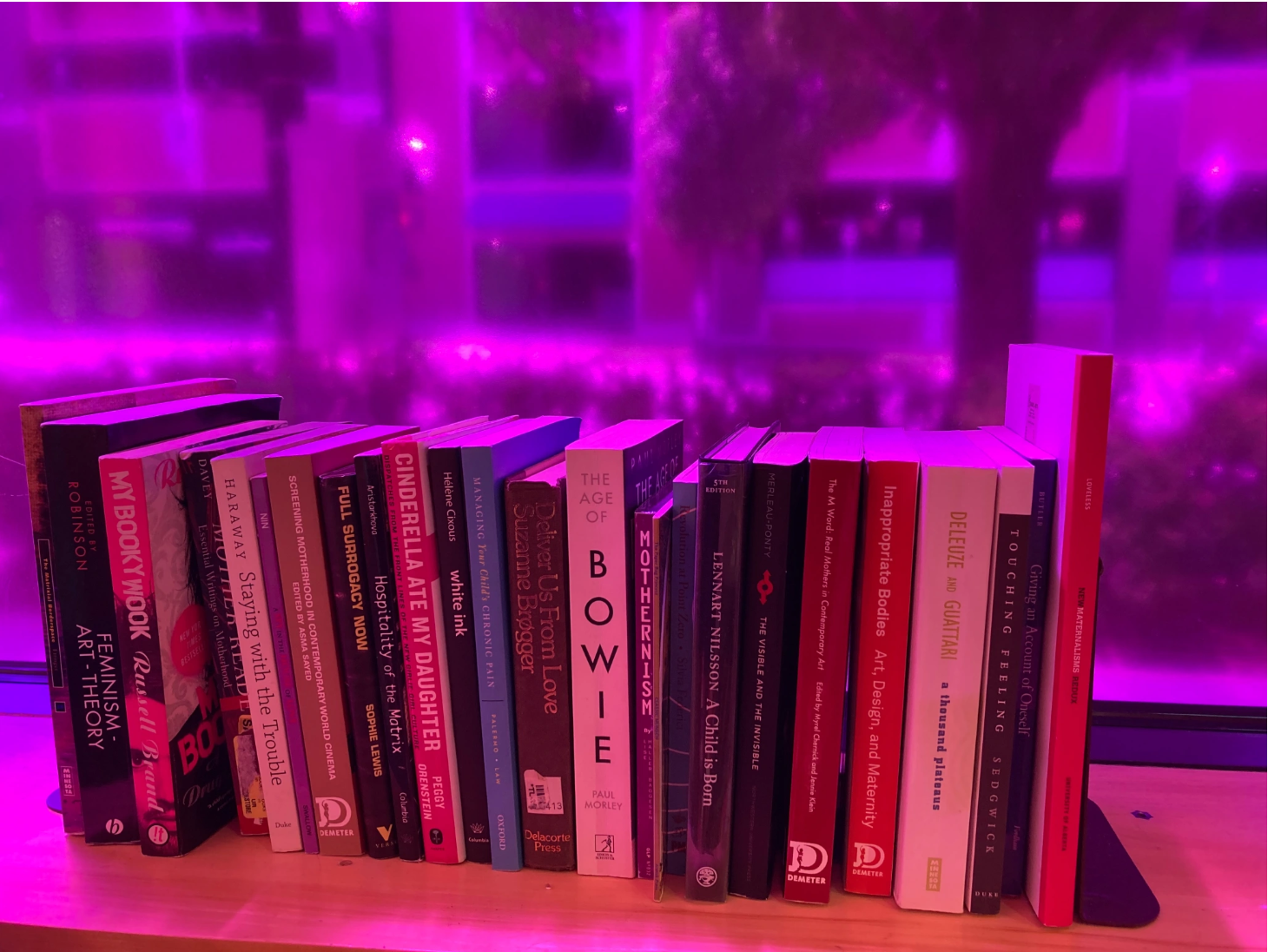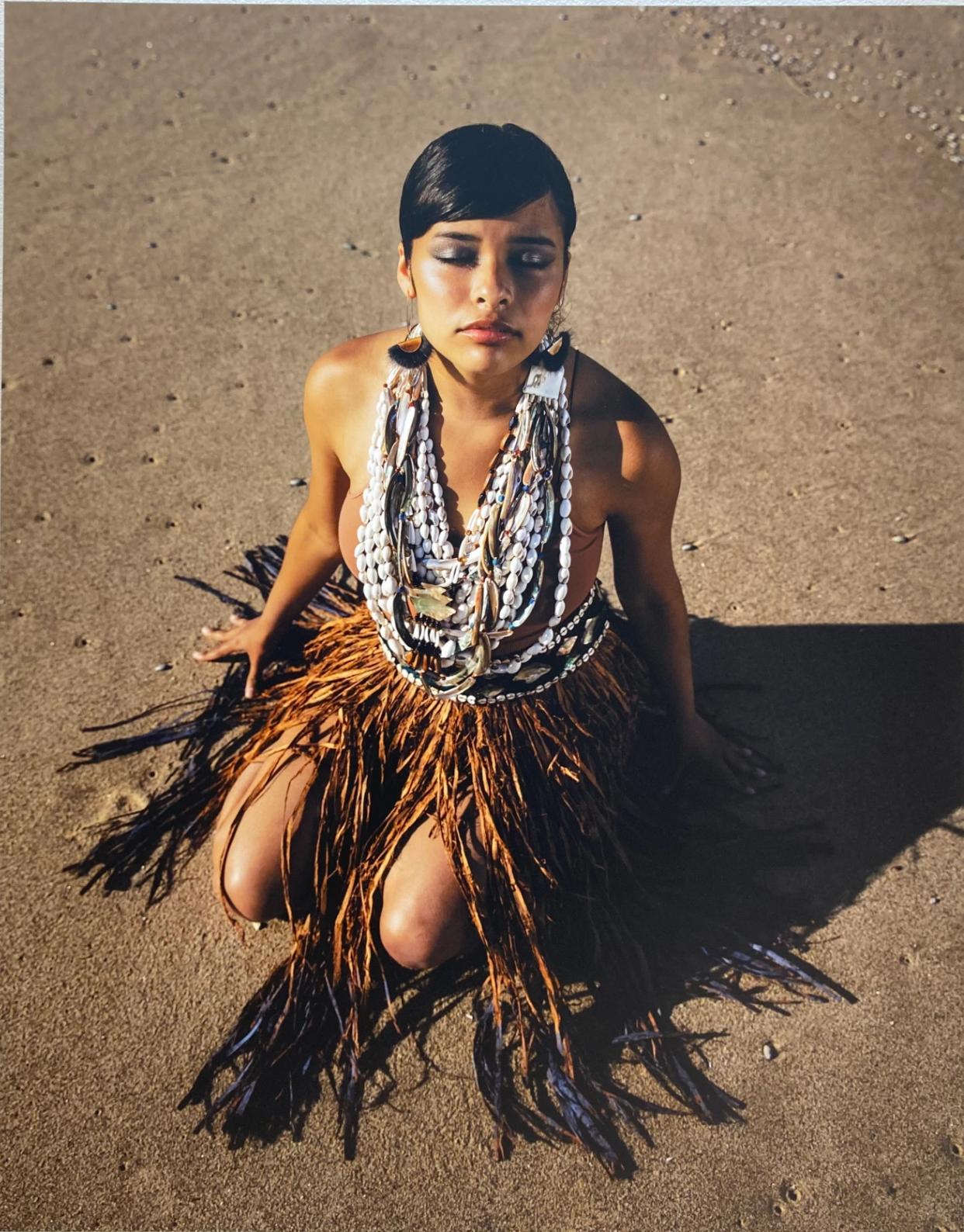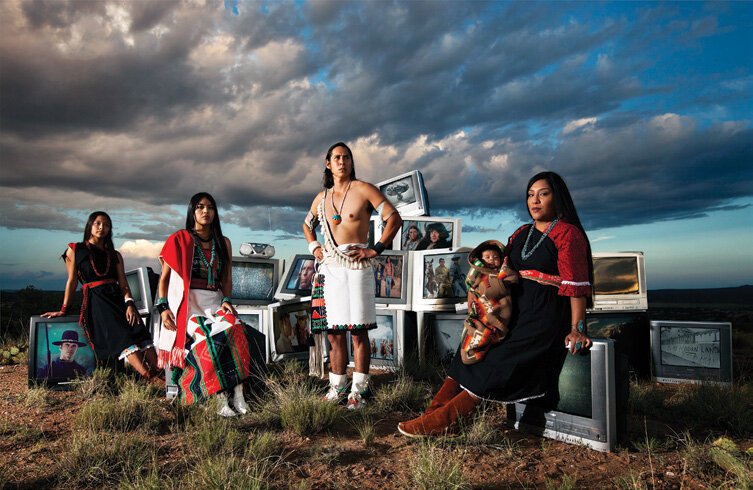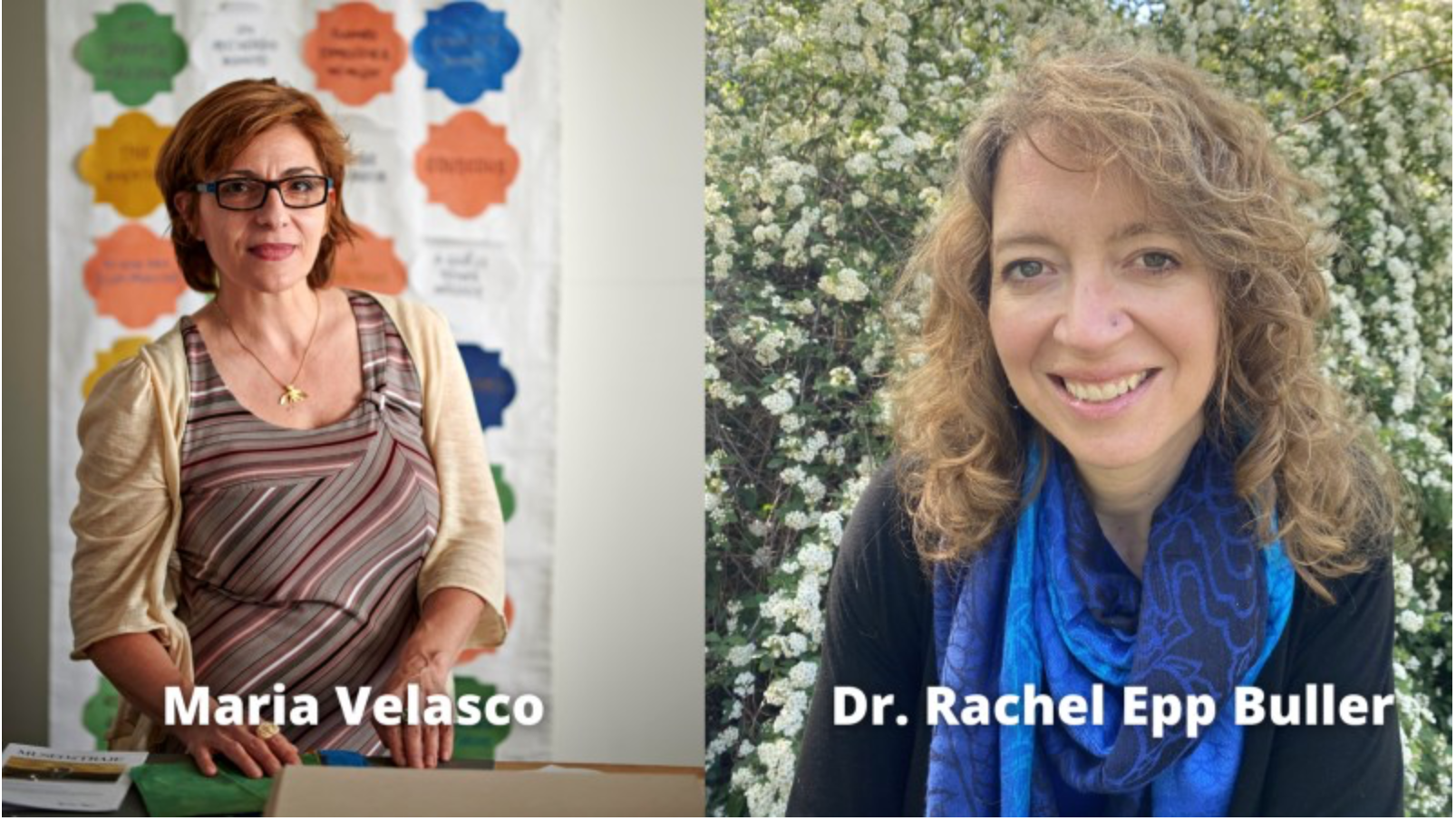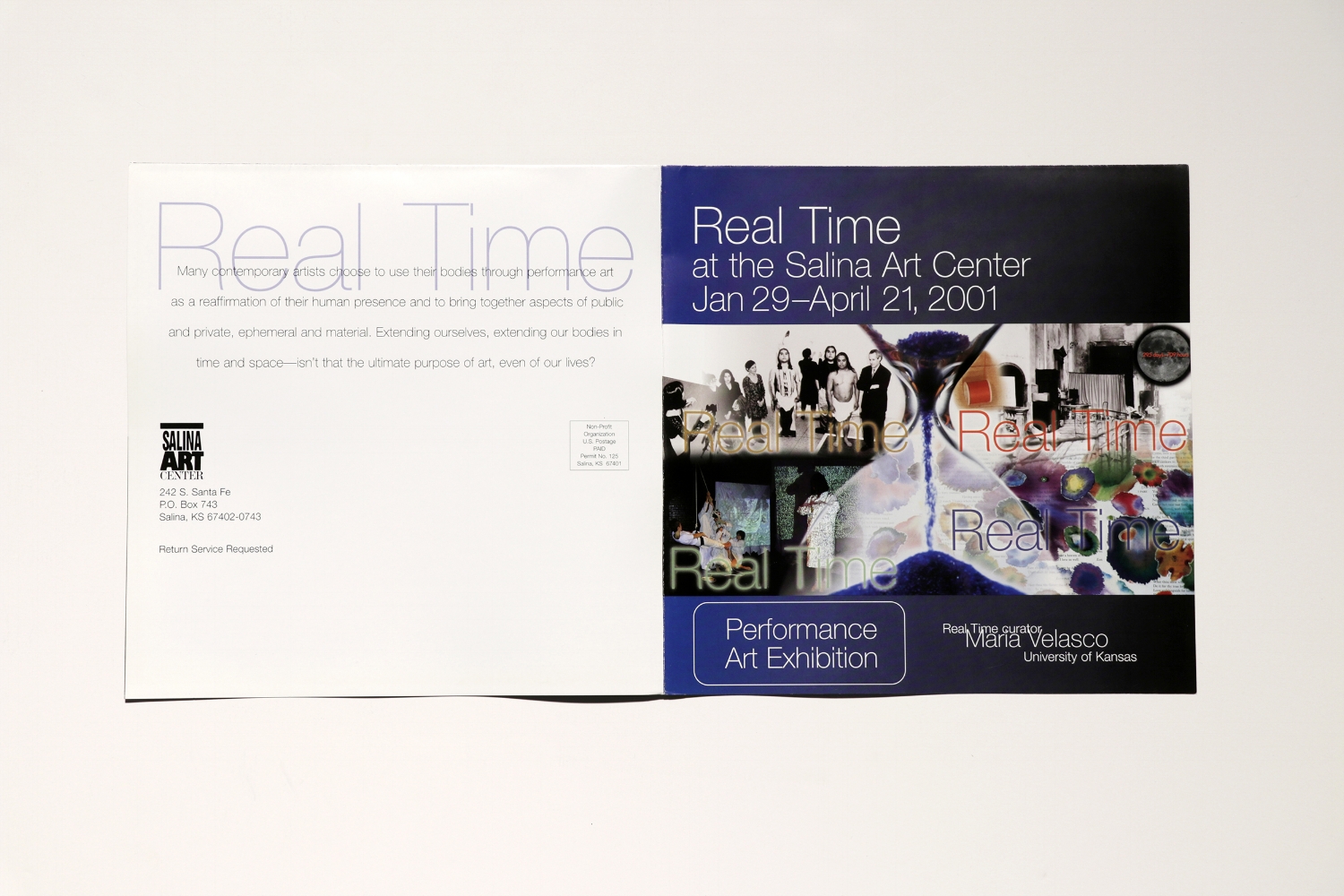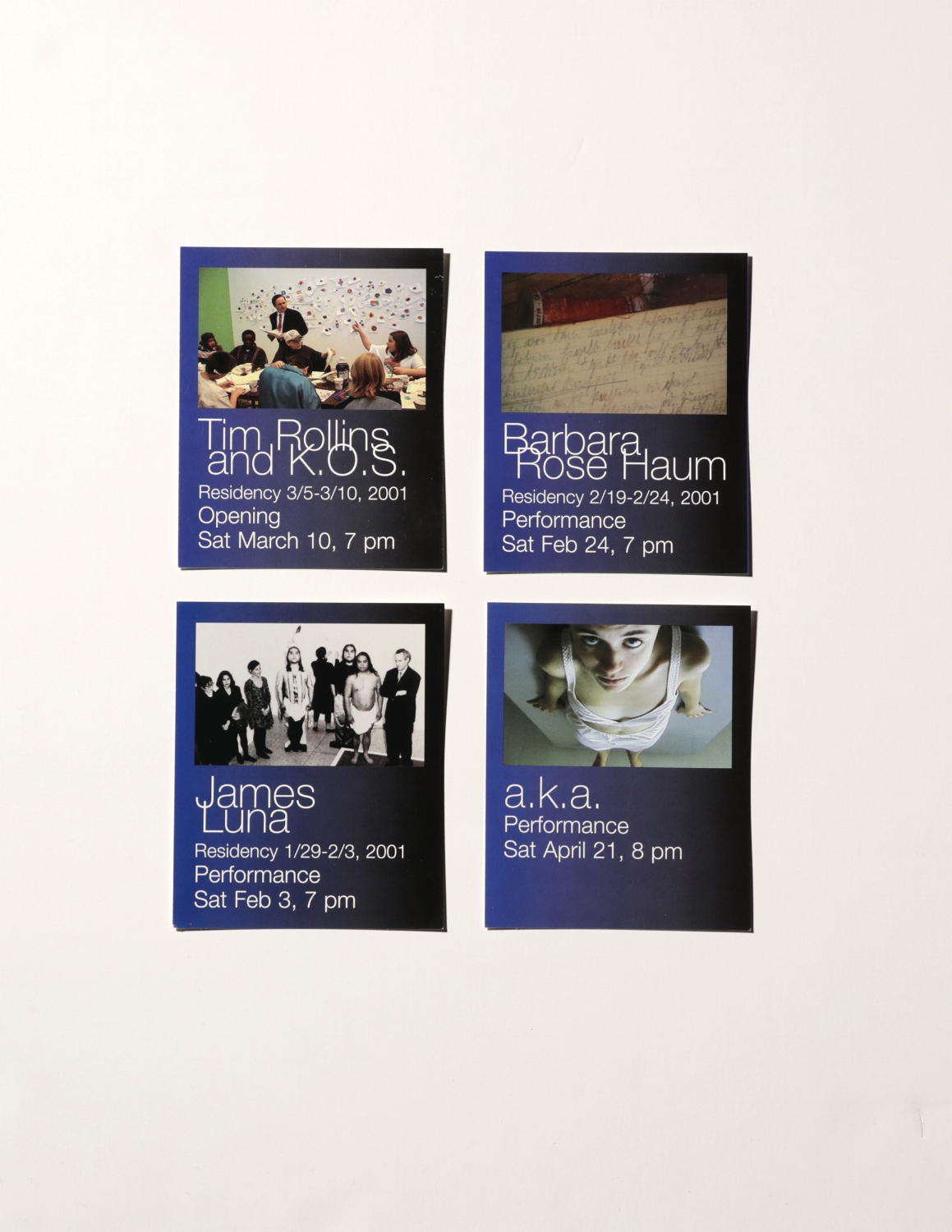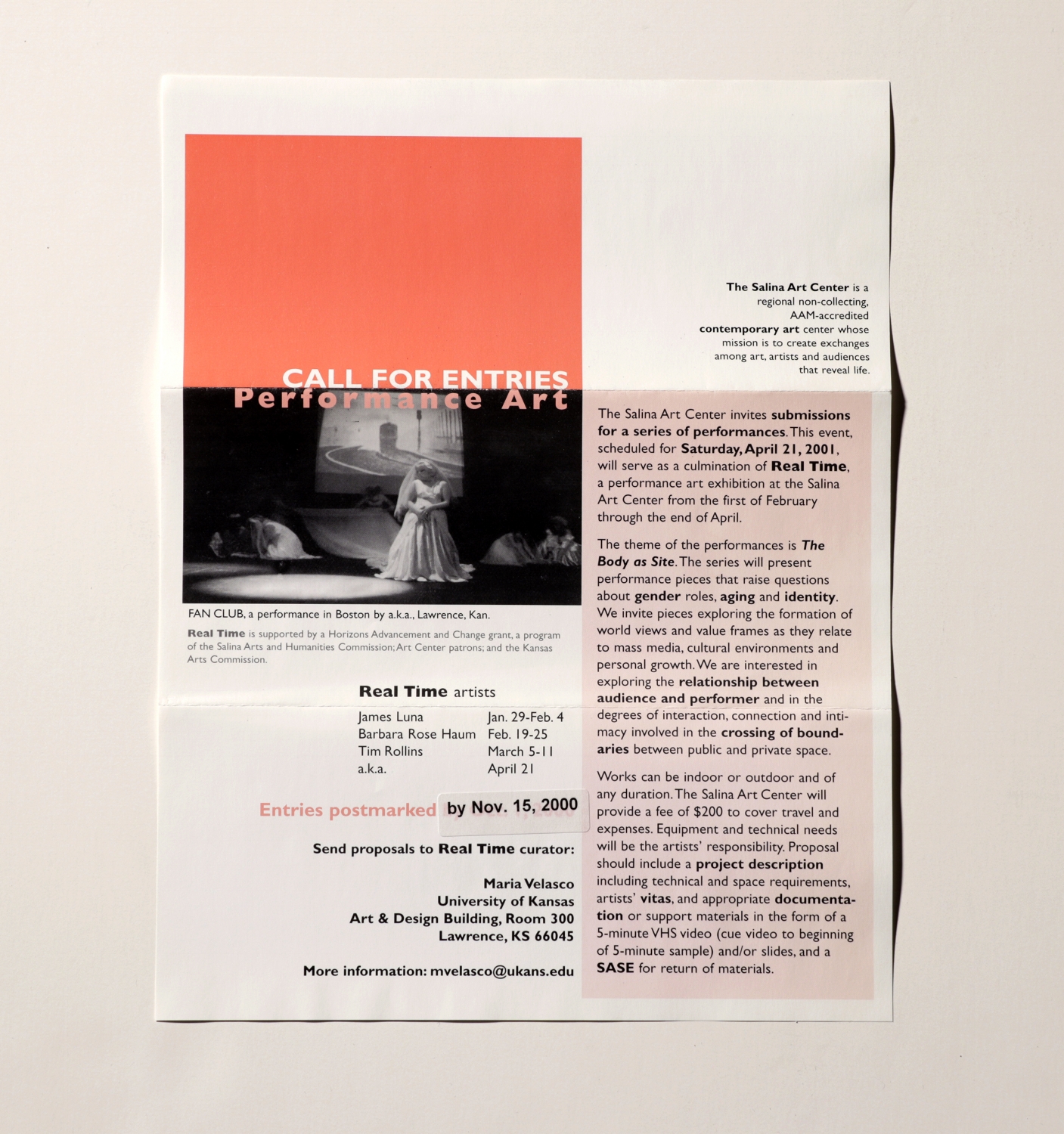Publications (Authored) and Curatorial Projects
Illustrations
2010
Velasco Moreno, Juan. “Massacre of The Dreamers.” Illustrations by María Velasco, Madrid: Polibea Press, 2010
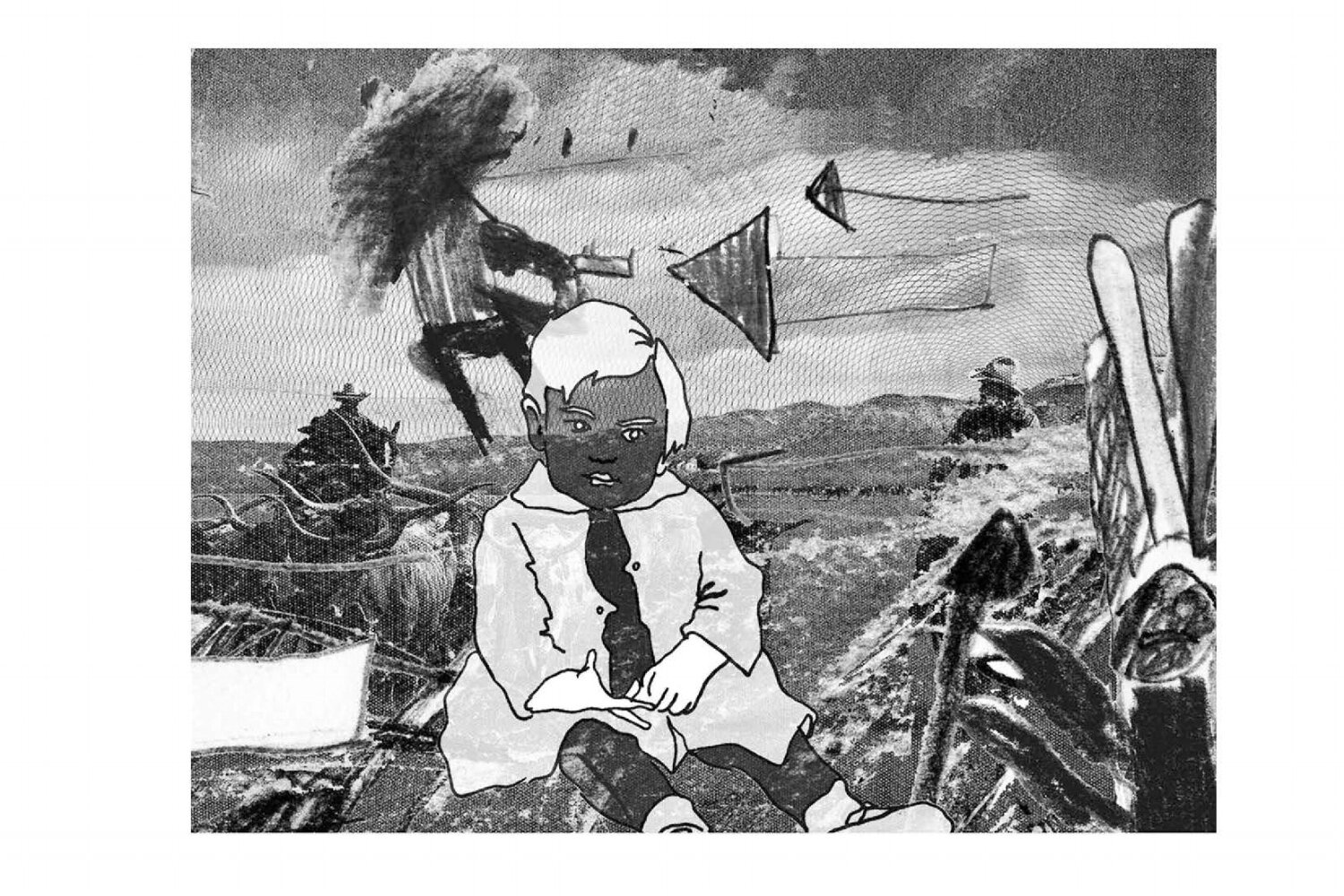
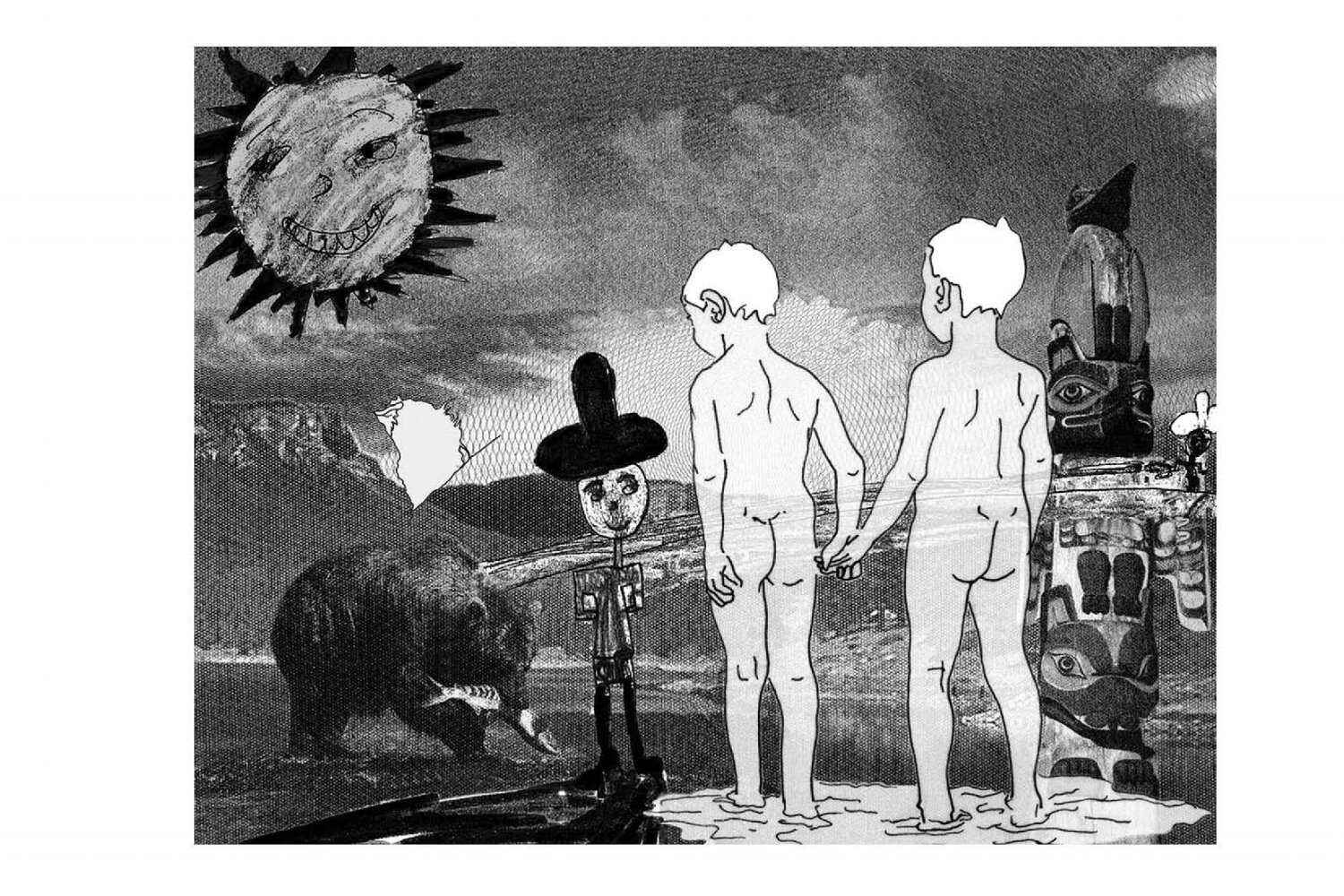
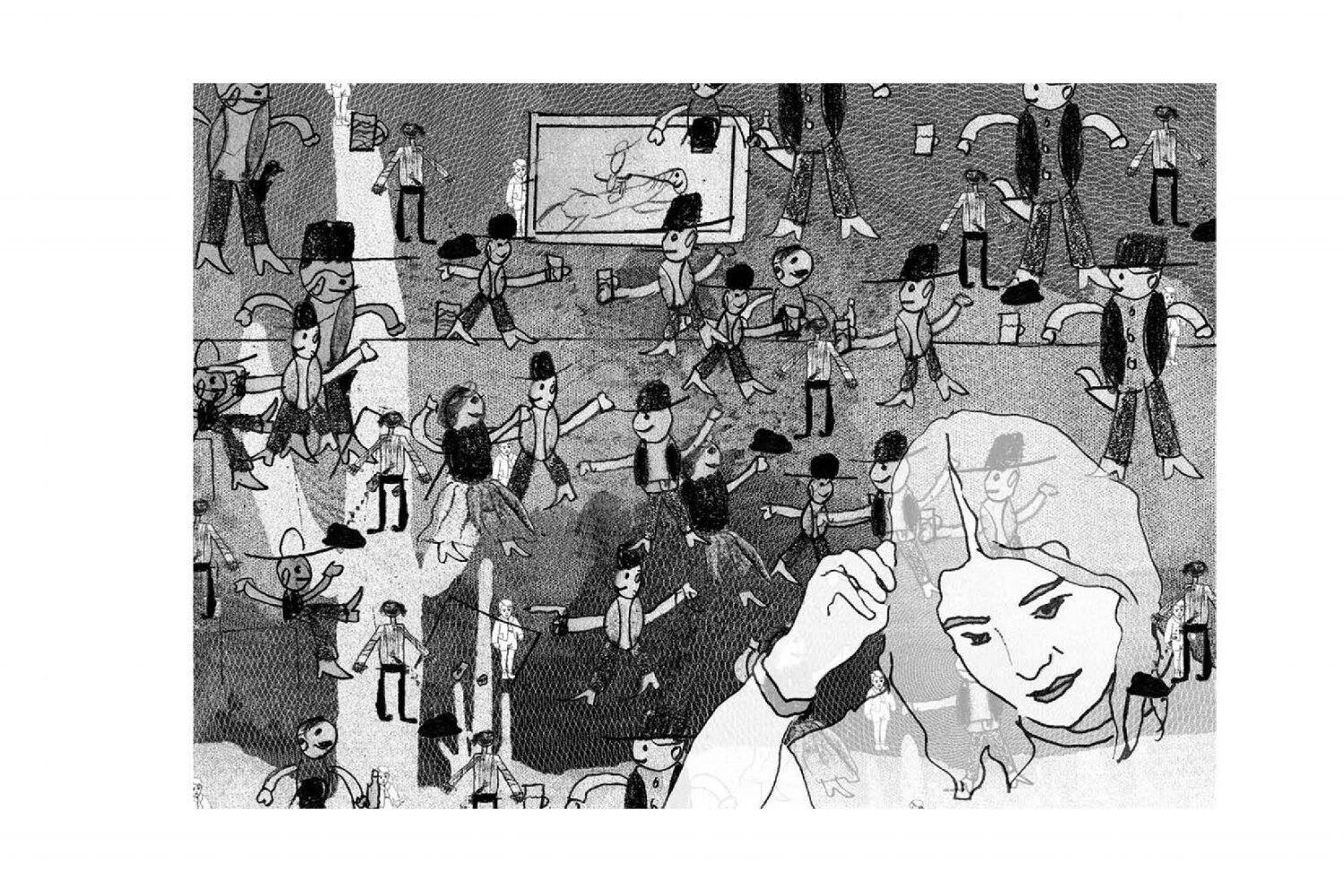
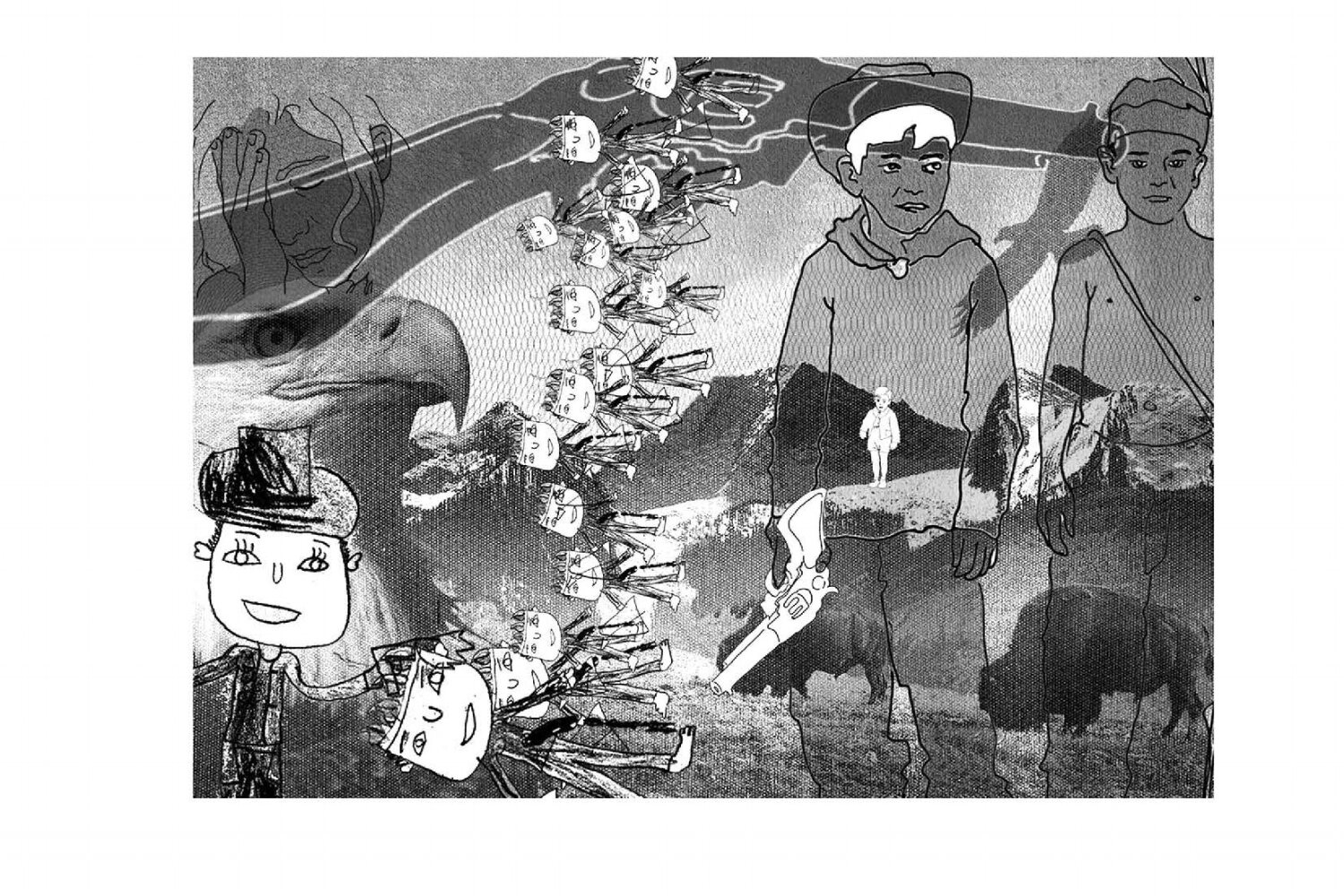

Publications (authored)
2003
Velasco, María. “3rd Binational Art Exhibition US-Paraguay”, Exhibition Catalogue, Paraguayan-American Cultural Center, Asunción, Paraguay
2001
Velasco, María. “Apropiación o Plagio?”, Noticias, November 25, 2001: Domingo, p. 22 (photo)
Curatorial Projects
2022
Maria Velasco Co-Curator with Dr. Rachel Epp Buller, “Making It Work”, Lawrence Arts Center, Lawrence, Kansas.
A child from the future finds a portal in the park and tells you a story about ecological collapse.
You see your favorite reading lamp and armchair in a new way during lockdown and turn them into a domestic sculpture.
A mother-artist-activist invites us to think about how we care for the 21st century while hanging out in a disco installation.
How, then, does one as an artist, a parent, a caregiver, or a professional in the world, “make it work”?
Artists who are also parents navigate all-consuming roles that compete with each other, in the best of circumstances. Living in pandemic times further exacerbates these challenges. Some artists embrace the generative possibilities of parenthood, through subject matter, collaboration, or new rhythms and processes. For others, caring labors offer a lens through which to consider institutional structures, political reform, activism, intergenerational knowledge, and more sustainable futures. Making It Work brings together six contemporary artists from around the US whose familial bonds and extended caring communities creatively inform their artistic practices. Through drawings and prints, audio and photography, installation and participatory work, these artists engage the ties of kinship, tell stories across generations, posit caregiving as a political act, and develop community-minded initiatives for change.
Featured Artists (L to R): Pilar Agüero-Esparza, Alberto Aguilar, Christa Donner, Lise Haller Baggesen, Cara Romero, and Jina Valentine
Programming by Black Lunch Table
Curated by Dr. Rachel Epp Buller and Maria Velasco
In partnership with the Spencer Museum of Art.
In the summer 2022, we partnered with the Lawrence Arts Center to bring Making It Work to Lawrence; a show about being an artist and being a parent and exploring and navigating where they intersect. What does it mean to be an artist? What does it mean to be a parent? How can you incorporate one into the other? Six artists from around the country have answered those questions and have created work that incorporates their family life into their artistic practice.
Additionally, we facilitated programming through The Black Lunch Table, a movement and project co-created by one of the Making It Work artists, Jina Valentine and her creative partner Heather Hart. The BLT’s primary aim is the production of digital, web-based information, where people who identify as cultural producers hold discussions touching on a variety of critical issues. BLT organizes the rewriting of contemporary cultural history by engaging in conversations around and among the people living it.
Each artist has their own unique practice and way of interweaving their family life and artistic practice. Check it out!
Pilar Agüero-Esparza: Back Pointe, Casted Crayon
Pilar Agüero-Esparza is originally from Boyle Heights in East Los Angeles, Agüero-Esparza was exposed to the potential and richness of materials and the love of the hand-made working in her parents’ shoe shop. She received a BA in Art from the University of California Santa Cruz, and MFA from San Jose State University. Agüero-Esparza has been an active artist, arts educator and arts administrator in the Bay Area exhibiting her work in numerous institutions including the San Jose Museum of Art, Triton Museum, Yerba Buena Center for the Arts, The Santa Cruz Museum, MACLA, Palo Alto Arts Center, Galeria de la Raza, and the De Young Museum. In 2017, her work was featured in the exhibition The U.S.-Mexico Border: Place, Imagination, and Possibility at the Craft Contemporary Museum, Los Angeles as part of the Getty Foundation Southern California initiative Pacific Standard Time: LA/LA, an ambitious exploration of Latin American and Latino art. In 2019, the U.S.-Mexico Border exhibition traveled to Lille, France as part of the Eldorado Lille3000 arts festival. Sponsored by festival organizers, Agüero-Esparza traveled to France and worked with community members teaching huarache-making workshops at the Maison Folie Wazemmes.
Her inquiry begins with the materials and processes specific to growing up in a shoemaking family. In the craft tradition of huarache–making (Mexican indigenous sandals), repetitive gestures such as the weaving of leather, the hammering of nails, and the painting of finishing details makes up Agüero-Esparza’s current practice.
The physical presence and signifying potential of these materials and gestures inspire Pilar to analyze how objects are made, who makes them, and the physical or social conditions involved in their making. Through her works, she invokes the viewer to consider the inequities of race, gender, and class by presenting them with specific cultural and aesthetic experiences. In representing ideas of othering and conditions of otherness, she calls attention to these cultural and aesthetic experiences to validate them and acknowledge their power.
By employing strategies of early Modernism and rendering them with lowly craft materials, a merger is formed that creates tension and contradiction and preoccupies Agüero-Esparza in a dialogue about art versus craft. She employs the language of abstraction and explores the tropes of Color Theory, substituting a skin-tone palette for prismatic colors to draw attention to the complexities of skin color. While her chosen color palette is contrived as “neutral” Agüero-Esparza want to convey hierarchical power dynamics represented in the chromatic gamut of beige, brown, and black. She wants the viewer to see her works as “racialized abstractions” and consider social dynamics and colorism within our culture.
Alberto Aguilar is a Chicago based artist that was born there as well. Aguilar’s creative practice often incorporates whatever materials are at hand as well as exchanges with those around him or people that encounter his artwork. His work bridges media from painting and sculpture to video, installation, performance, and sound and has been exhibited at Chicago’s Museum of Contemporary Art, the Queens Museum, Crystal Bridges Museum of American Art, the Nelson-Atkins Museum of Art, the Minneapolis Institute of Art and the Art Institute of Chicago. He holds a BFA and an MFA from the School of the Art Institute of Chicago and currently teaches at Harold Washington College one of the City Colleges of Chicago.
“Aguilar wasn’t always the sort of artist who made conceptual or performative work. He began his career as a traditional painter, inspired by powerhouses like Picasso and Cézanne. But as his life began to include more responsibilities—as a husband, a college professor, and father to four children—he realized that he wanted a simplified creative practice. The dissolution of his studio came around the time he started working full time as a studio art professor at Harold Washington College. He resigned from that job in 2018: after 12 years, he was ready for new challenges.
Christ Donner: Dear Human: Accompanying Sound Track
Christa Donner is an artist, writer, and organizer who investigates the human/animal body and its metaphors. Her practice combines material exploration and social exchange to propose speculative models that move between the emotional architecture of our own bodies and the layered histories of the world we inhabit.
Donner’s work is exhibited widely, including projects for Gallery 400 (Chicago, USA), the Max Planck Institute for the History of Science (Berlin, Germany), BankArt NYK (Yokohama, Japan); Chiaki Kamikawa Contemporary Art (Paphos, Cyprus); the Museum Bellerive (Zurich, Switzerland), the Centro Columbo Americano (Medellin, Colombia), and throughout the United States. In 2012, when her daughter was one year old, Donner initiated Cultural ReProducers, an evolving creative platform for and about cultural workers who are also working it out as parents. Cultural ReProducers continues to foster visibility and support through events, publications, skill sharing, and an extensive online resource for artists and institutions.
Donner’s practice extends to her role as a curator and educator. She currently teaches courses in creative research, drawing, and small-press publishing at the School of the Art Institute of Chicago.
Listen to her new work for the exhibition: A Portal Is Opening, 2022
Lise Haller Baggesen: Motherism: Image courtesy The Contemporary Austin. Photograph by Brian Fitzsimmons
Lise Haller Baggesen’s hybrid practice includes writing, painting, installation, performative, sartorial, and textile-based work. Baggesen is an alumna of Billedskolen, Copenhagen (1989-91), AKI in Enchede (BFA PTDW 1992-95), the Rijksakademie in Amsterdam (1996/97), SAIC (MAVCS 2011-13), the Banff Centre for Arts and Creativity (2017). She is the recipient of Prins Bernhard’s Culture Prize (2000), the Royal Dutch Prize for Modern Painting (2002), and a 2015 nominee for The Joan Mitchell Foundation’s Emerging Artist Grant. She exhibits internationally, including 6018 North, the Poetry Foundation, MCA, DPAM, and AIC, Chicago (IL); The Suburban, Milwaukee (WI); Gemeentemuseum Den Haag (NL); Overgaden (DK); Württembergischem Kunstverein (D); MoMu Antwerp(B); Théatre de la Ville de Paris, Le Confort Moderne, Poitiers, and Villa Arson, Nice (F).
Her book and multi-media project Mothernism (2013) toured extensively, staking out the “Mother-shaped Hole in Contemporary Art Discourse” at (amongst others) The Poor Farm (WI), The Contemporary Austin (TX), VOX Populi (PA), EFA and A.I.R. Gallery (NY). It was reviewed in Art21, KQED, and Hyperallergic and spawned the international symposia The Mothernists I+II in Rotterdam (2015) and Copenhagen (2017).
Interpersonal relationships, intergenerational and intersectional eco- and cyber- feminism, reproductive justice, therapeutic aesthetics, color field painting, sci-fi tie-dye, hippie modernism, bio-punk, grunge, glam, and disco, are some of the vernaculars that inform Haller Baggesen’s body of work. Since graduating in 2013 from SAIC’s department of Visual and Critical Studies, this organic body has manifested itself in a hybrid and polydisciplinamorous practice, including writing, audio-visual installations, textile-, and sartorial works.
Mother is a noun and a verb; Haller Baggesen regards her practice as a sourdough, a gestation of material, out of which individual works, texts, and shows are wrought, while the mother remains, active.
Cara Romero: TV Indians (Color)
Cara Romero is a contemporary fine art photographer. An enrolled citizen of the Chemehuevi Indian Tribe, Romero was raised between contrasting settings: the rural Chemehuevi reservation in Mojave Desert, CA and the urban sprawl of Houston, TX. Romero’s identity informs her photography, a blend of fine art and editorial photography, shaped by years of study and a visceral approach to representing Indigenous and non-Indigenous cultural memory, collective history, and lived experiences from a Native American female perspective.
As an undergraduate at the University of Houston, Romero pursued a degree in cultural anthropology. Disillusioned, however, by academic and media portrayals of Native Americans as bygone, Romero realized that making photographs could do more than anthropology did in words, a realization that led to a shift in medium. Since 1998, Romero’s expansive oeuvre has been informed by formal training in film, digital, fine art and commercial photography. By staging theatrical compositions infused with dramatic color, Romero takes on the role of storyteller, using contemporary photography techniques to depict the modernity of Native peoples, illuminating Indigenous worldviews and aspects supernaturalism in everyday life.
Maintaining a studio in Santa Fe, NM, Romero regularly participates in Native American art fairs and panel discussions, and was featured in PBS’ Craft in America (2019). Her award-winning work is included in many public and private collections internationally. Married with three children, she travels between Santa Fe and the Chemehuevi Valley Indian Reservation, where she maintains close ties to her tribal community and ancestral homelands.
Images from the Black Lunch Table project (clockwise from top left): screen capture from the Black Lunch Table archive; question cards from The People’s Table session at the 8th Floor at Rubin Foundation, NY 2017; Artists’ Roundtable session at BAR, Dorchester Projects, Chicago, 2014; The People’s Table session at Project Row Houses, Houston, 2016.
Jina Valentine was born in Pennsylvania and is currently based in Chicago, IL. Her interdisciplinary practice is informed by the intuitive strategies of American folk artists and traditional craft techniques, and interweaves histories latent within found texts, objects, narratives, and spaces. She has exhibited at venues including The Drawing Center, The Studio Museum in Harlem, the CUE Foundation, the Elizabeth Foundation, the DiRosa Preserve, Southern Exposure, Marlborough Gallery. She has participated in residencies at the Atlantic Center for the Arts, Women’s Studio Workshop, Sculpture Space, the Skowhegan School of Painting and Sculpture, the Santa Fe Art Institute, the Cité Internationale des Arts in Paris, the Joan Mitchell Center in New Orleans, and Banff Centre in Alberta. Her independent practice has received recognition and support from the North Carolina Arts Council Grant, the UNC Institute for Arts and Humanities, Art Matters, and the Joan Mitchell Foundation. Jina received her BFA from Carnegie Mellon University and her MFA from Stanford University.
Images from the Black Lunch Table project (clockwise from top left): screen capture from the Black Lunch Table archive; question cards from The People’s Table session at the 8th Floor at Rubin Foundation, NY 2017; Artists’ Roundtable session at BAR, Dorchester Projects, Chicago, 2014; The People’s Table session at Project Row Houses, Houston, 2016.
Meet the Curators: Dr. Rachel Epp Buller and María Velasco
Curators Dr. Rachel Epp Buller and Maria Velasco bring Making It Work to Lawrence: an exhibition about the intersections between being an artist and a parent and the generative possibilities of parenthood through subject matter, collaboration, or new rhythms and processes.
Programming and Events
Opening Reception: May 27, 5-9pm
Curators’ Gallery Tour: May 27, 7pm
Wikipedia Edit-a-thon: June 25, 1pm (virtual)
Artists’ Table: July 9, 12 pm (virtual)
People’s Table: July 16, 1230pm (virtual)
Curators’ Presentation: July 28, 7 pm | Lecture on Dr. Epp Buller’s book Inappropriate Bodies: Art, Design, Maternity and the first local screening of Velasco’s film All of Me: Artists+Mothers
Closing Reception: July 29, 5-9 pm, featuring an original poetry reading by Poet TL Sanders from 6:30-7 pm.
Making It Work in the media: press, interviews, and podcasts
Over the course of the summer, we have had many conversations and community engagements with the Making It Work exhibition. Here are some links to news articles and interviews with the curators. KPR interviewed both Epp Buller and Velasco on their Conversations podcast, hosted by Dan Skinner. Maria Velasco was also featured on KKFI’s ArtSpeak to discuss her involvement with Making It Work and most recently she was interviewed on Renewing the World.
Read the featured Making It Work article in the Lawrence Kansas Times.
Check out the radio interview with María Velasco at local KC radio KKFI for ArtSpeak with host Maria Vasquez-Boyd.
Read Rick Hellman’s article about the show Making it Work: Art and Parenting.
Listen to Maria and Rachel discuss Making It Work on KPR’s Conversations podcast.
This article in the Kansas Reflector by Kansas Poet Laureate, Huscar Medina, is a must-read.
And lastly, listen to Maria on Renewing the World as she discusses the generative possibilities of being an artist, a parent, and an academic. In this episode, Maria Velasco addresses both the challenges and the promises of those intersections in her own life and work while also touching on issues of migration, displacement, parent-child collaboration, and curatorial practice.
2005
María Velasco, Co-Curator, with Artists Diana Dunkley and Margaret Rose, "Paths and Structures, A Collaborative Installation", Exhibition Brochure, Art and Design Gallery, University of Kansas, Lawrence, KS
2001
María Velasco, Guest Curator, "Real Time", Exhibition Brochure, Salina Art Center, Salina, KS
Real Time
"Many Contemporary artists choose to use their bodies and performance art as a reaffirmation of their human presence and to bring together aspects of public and private, ephemeral and material. Extending ourselves, extending our bodies in time and space--isn't that the ultimate purpose of art, even of our lives?"
James Luna // Residency 1/29-2/3, 2001 // Performance Sat Feb 3, 7 pm.
James Luna is a Luiseno Indian who lives on the La Jolla Indian Reservation in Pauma Valley, Calif. Luna believes that installation and performance art, which employ a variety of media such as objects, audio, and video, offer a unique opportunity for Native American people to express themselves without compromising theit traditional art forms of ceremony, dance, and oral traditions. In his installations and performances, Luna addresses the mythology of what it means to be "Indian" in contemporary America, and exposes hypocritical attitudes and romantic stereotypes within mainstream and dominant cuiture. His work is provocative, often dealing with difficult issues affecting Native American communities, including socio-economic problems, substance abuse, and cultural conflict. His works Take A Picture With A Real lndian and The Creation and Destruction of an American Indian Reservation: An American Dilemma bring us a greater appreciation of our differences and an enhanced awareness of our potential for understanding our basic human condition.
Luna was born in 1950 in Orange County. Calif. He received his BFA in studio arts at the University of California, Irvine in 1976 and his MS in counseling from San Diego State University in 1983. Luna has received many grants and awards and has exhibited his work in major museums and galleries in the U.S. and Canada. He teaches as a full-time academc counselor at Palomar College in San Marcos, Calif.
Barbara Rose Haum // Residency 2/19-2/24, 2001 // Performance Sat Feb 24, 7 pm.
Barbara Rose Haum is a German-Jewish born artist who has been living and working in New York City since the 1980s. Her work emphasizes the performative aspect of language by examining how values are constructed through text, and more specifically through the ritualistic repetition of words. Haum's work attempts to transform traditional readings through the intertwining of Classical biblical texts with contemporary narratives found in newspaper clippings, fairy tales, myths, and autobiographical accounts. Integral to her research is the struggle to decentralize the authority of the text and to bring nourishment to language. Lunar Performances: Creating an Architecture of Text in Time is an extension of her inquiry into the relationship between the mundane and the sacred, the public and
private rituals through which we form our intimate and social sense of place. "Spilling Ink" at the Salina Art Center will be the first of series of evolving perlormances that will take place in different locations from 200l-2003. The performances will be woven together through an interactive web page that will allow them to continue through electronic media.
Haum was born in Frankfurt, Germany, in 1962, and much of her earlier work addressed her German-Jewish upbringing in post-war Germany. She received her doctorate in studio art in 1995 at New York University. She has received many awards and has exhibited her work nationally and internationally. Haum is currenlty an assistant professor at New York University in the Department of Culture and Communications.
Tim Rollins and K.O.S. // Residency 3/5-3/10, 2001 // Opening Sat March 10, 7 pm.
Tim Rollins and Kids Of Survival have worked collaboratively since the earty 1980s when Rollins took a teaching job in the South Bronx where he was asked to set up a special course for art for students with educational and emotional disabilities. Since that time, Rollins and his students across the country and the world have created works based on literary texts. Rollins believes that lhe process of making a work of art and the dialogue and insights of participating studenls from different backgrounds and economic conditions are integral to the work. By combining teaching, mentorship, and painting techniques. their approach to art Is performative. Through their interaction, they create works of artistic and social purpose. Rollins believes that through art, students wil have a presence and voice in the world. Shakespeare's A Midsummer Night's Dream will serve as inspiration for twenty-four Salina students who will work with Rollins in after-school workshops where a finished piece, And As Imagination Bodies Forth, will evolve through a process of tutorials, discussion, group consensus, and exhaustive preparatory drawings.
Tim Rollins is a well-known, highly respected, and at times controversial figure in contemporary art. He was born in Pittsfield, Maine, in 1955. He graduated from the University of Maine and went on to the New York City School of Visual Arts and the New York University School Of Art Education. He lives in New York City where he is the founder of K.O.S. and the Art and Knowledge Workshop in the South Bronx. Works by Rollins and K.O.S. are represented in the permanent collections of museums across the country.
a.k.a. // Performance Sat April 21, 8 pm.
a.k.a. is a coalition of women artists who seek to investigate the realities of their lives and to express their findings visually through the medium of performance. By using familiar objects, words, and commonplace experiences, they transform the basic elements of their lives into the substance of their art. Their collaborative process results in a variety of interpretations of an Idea, embracing individuality within the framework of a group. The diversity of the group brings an element of tension to their work, often creating a contained chaos not so unlike life itself. White Noise is structured around a series of live-action performance segments interwoven with video imagery investigating perceptions of time, and focuses on all that is transient, fleeting, and impulsive in our lives, not the least of which is memory. It explores several personal readings of whiteness; the empty page and the notion of purity and of light, and of noise: a song, a breath, a slap, a prayer. a.k.a. performers will be Nicole Baron, Janet Davidson-Hues, Rachel Eilts, Keiko Kira, Mirja Koponen, Traci Tullius, and Cara Waltz.
a.k.a. is a group diverse in age, experience, background, and lifestyle, spanning three generations and three continents, who perform together in various venues across the country. As individual artists they have exhibited their work regionally and nationally; as a group, they have presented their works across the nation. The group has received a grant from the Franklin Furnace Performance Art Fund to perform a major work that opened last fall at HERE Performance Cafe in New York City.
Related Programming
JAMES LUNA, in residence at the Salina Art Center.
Artist lecture Luna will show video and discuss his work, Wed, Jan 31, 7 pm, Art Center Cinema. t 50 S. Santa Fe, Free.
James Luna Performances Take A Picture With A Real Indian (7 pm) and The Creation and Destruction of An American Indian Reservation: An American Dilemma (8 pm) Sat, Feb 3, Salina Art Center, 242 S. Santa Fe.
Related Programs at the Art Center
Poetry Reading: Sui Translation: Translating for the Self, by poet James Thomas Stevens of Haskell Indian Nations University, Thurs, Feb 8. 7 pm. Free. Art Workshop: Image and Metaphor, an intergenerational self-portrait workshop for ages 12 and up with artist Lee Becker, Lindsborg. Participants will create a self-portrait incorporat1ng symbols, colors, shapes, metaphors and found objects. Sat, Feb 10, 10 am to 3 pm with lunch break. $20 per person. Call 827-1431 to enroll.
Gallery Walk: Explore Luna's installation in the outer galleries with Art Center education coordinator Harley Elliott. Thurs, Feb 15, noon. Free.
This performance was recorded for Real Time Exhibition at the Salina Art Center, Salina, KS, 2001.
James Luna (Puyoukichum [Luiseño]) has performed this piece in various significant locations such as the Christopher Columbus statue outside the front of Union Station in downtown Washington, D.C.
BARBARA ROSE HAUM, in residence at the Salina Art Center.
Artist lecture Renaming Visibility, Thurs, Feb 22, 7 pm, Salina Art Center, 242 S. Santa Fe.
Barbara Rose Haum Performance Spilling Ink from Lunar Performances: Creating An Architecture of Text in Time, Sat, Feb 24, 7 pm, Salina Art Center.
Related Programs at the Art Center
Gallery Walk: Explore Haum's installation with clinical psychologist Paula Fried, Fri, March 2, noon.
Art Workshop: Life Patterns, a workshop on private and public ritual for adults with Fr. Frank Coady, artist Sandy Wedel, and clinical psychologist Paula Fried Discover the role of ritual in your everyday life, your religion and holidays, and create an icon or object to enhance or recognize your ritual experiences.
Sunday, April t. 7-9 pm Free. Call 827-1431 to enroll.
"Haum's Lunar Performances are featured on her website: www.nyu.edu/projects/haum
TIM ROLLINS & K.O.S., in residence at the Salina Art Center students March 5-9, 4-7 pm.
Artist lecture We Are Spirits of a Different Sort: Art, Youth and Transformation, Wed March 7, 8 pm, free.
Educators Workshop Salina Public Library, Sat March 10, 1 pm, free. Call 827-1431 to enroll.
Tim Rollins & K.O.S. Opening And As Imagination Bodies Forth, a collaborative work by Rollins and Salina students. Sat March 10, 7 pm.
Related Programs at the Art Center
Community Open Mike: Thurs March 15, 7 pm. Call 827-1431 for information.
Art Workshop: Collaboration Collage with Hugh Merrill of the Kansas City Art Institute. Sat March 17, 10 am to 4 pm with lunch break. $25 per person. Call 827 -1431 to enroll.
Panel Discussion: Artists and Social Change moderated by Lori Brack. Thurs March 29. 7 pm, free.
Performance Art Workshop with Roger Shimomura: Sat March 31, 1 to 4 pm, $15 per person. Limited enrollment. Call 827-1431 to enroll.
Performance Art Cabaret: Sat March 31, 8 pm, free.
CALL FOR ENTRIES: Performance Art.
The Salina Art Center invites submissions for a series of performances. This event, scheduled for Saturday, April 21, 2001, will serve as a culmination of Real Time, a performance art exhibition at the Salina Art Center from the first of February through the end of April.
The theme of the performances is The Body as Site. The series will present performance pieces that raise questions about gender roles, aging and identity. We invite pieces exploring the formation of world views and value frames as they relate to mass media, cultural environments and personal growth. We are interested in exploring the relationship between audience and performer and in the degrees of interaction, connection and intimacy involved in the crossing of boundaries between public and private space. Works can be indoor or outdoor and of any duration. The Salina Art Center will provide a fee of $200 to cover travel and expenses. Equipment and technical needs will be the artists' responsibility. Proposal should include a project description
including technical and space requirements, artists' vitas, and appropriate documentation or support materials in the form of a 5-minute VHS video (cue video to beginning of 5-minute sample) and/or slides. and a SASE for return of materials.
Entries Postmarked by Nov 15, 2000. Send proposals to Real Time Curator María Velasco, University of Kansas, Art & Design Building, Room 300, Lawrence KS 66045. More information: mvelasco@ukans.edu
Real Time is supported by a Horizons Advancement and Change program, a program of the Salina Arts and Humanities Commission; Art Center patrons; and the Kansas Arts Commission.
1996
María Velasco, Co-Curator, with Artist Diana Dunkley, Ebb + Flow, Outdoor Festival in Conjunction with The 5th Annual Harvest of Arts, Lawrence, KS
1995
María Velasco, Co-Curator, with Participating Members, Women Beyond Borders, A Cross-Cultural Exhibition Honoring and Connecting Women Artists at the Onset of the 21st Century, Contemporary Arts Forum, Santa Barbara, CA. To learn more about this project, click here.
"As contributing artist and team organizer of WOMEN/Beyond Borders, I learned to understand the world in a radically new way: one that is based in interaction and teamwork, versus the traditionally patriarchal view of individuality, competition and isolation. Woman is one and multiple at once; her strength resides in being so versatile to the extent that her individuality doesn’t feel threatened by working in collaboration. This attitude is very valuable and very rare nowadays. Collaboration, exchange, dialogue are the elements that contribute to the impact of a show like this. Woman extends herself and becomes “female”. Female exists beyond anatomical difference."
María Velasco, WBB Artist
1993-95
María Velasco, Graphic Arts Cataloguer and Curatorial Assistant, California Ethnic and Multicultural Archives (CEMA), Library Special Collections, University of California, Santa Barbara, CA
1993-94
María Velasco, Guest Curator, Dos Décadas de Artistas Chicanas (1972-1990): Envisioning and Transforming Culture, A Selection of Prints from the California Ethnic and Multicultural Archives, Art Gallery, Women’s Center, University of California, Santa Barbara, CA
1992
María Velasco, Assistant Curator, Santa Barbara Trust for Historic Preservation, Santa Barbara, CA



